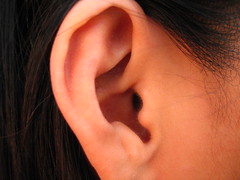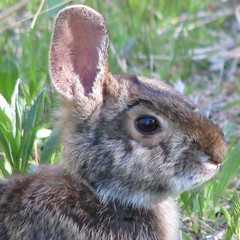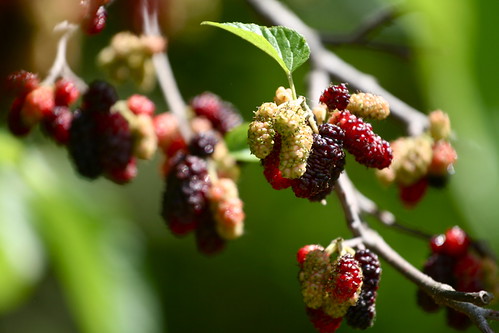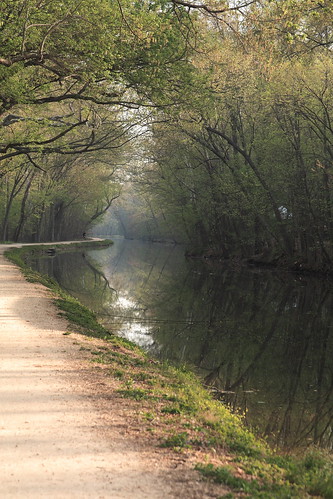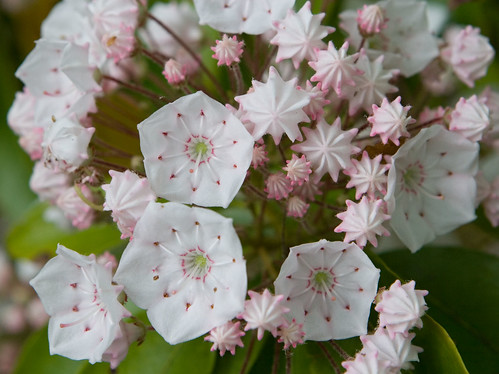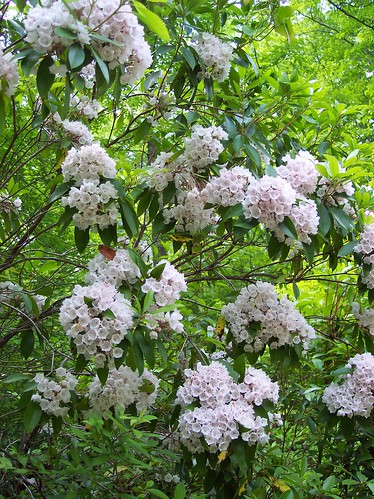 This week's highlight: National Trails Day is Saturday, June 6. Get out and celebrate the effort of all the people who work long, hard hours keeping up the trails that we all enjoy -- or pitch in yourself. The Sierra Club is celebrating with 5 hikes scheduled for the day. The Potomac Appalachian Trail Club will have activities based at Byrd Visitor Center in Shenandoah National Park as well as several opportunities for trail crew work, including one in Rock Creek Park. Several other groups are also sponsoring hikes.
This week's highlight: National Trails Day is Saturday, June 6. Get out and celebrate the effort of all the people who work long, hard hours keeping up the trails that we all enjoy -- or pitch in yourself. The Sierra Club is celebrating with 5 hikes scheduled for the day. The Potomac Appalachian Trail Club will have activities based at Byrd Visitor Center in Shenandoah National Park as well as several opportunities for trail crew work, including one in Rock Creek Park. Several other groups are also sponsoring hikes. Also: Saturday is also the Chesapeake Bay Foundation's 20th annual Clean the Bay Day. "Litter pollutes our waterways, kills marine and other wildlife, and degrades our neighborhoods. Shoreline debris is one of the most visible and pervasive reminders that the Chesapeake Bay is in need of restoration and improved stewardship...Join 7,000 fellow Virginians in removing unhealthy debris from cherished waterways throughout the Commonwealth. Show the world that an unhealthy Bay is unacceptable!"
Also: Saturday is also the Chesapeake Bay Foundation's 20th annual Clean the Bay Day. "Litter pollutes our waterways, kills marine and other wildlife, and degrades our neighborhoods. Shoreline debris is one of the most visible and pervasive reminders that the Chesapeake Bay is in need of restoration and improved stewardship...Join 7,000 fellow Virginians in removing unhealthy debris from cherished waterways throughout the Commonwealth. Show the world that an unhealthy Bay is unacceptable!"Sierra Club
Tue: Robertson Mt., White Oak Canyon, and Old Rag (16 mi)
Tue eve: Canoe & Kayak lessons at Fletcher's Boat House
Sat: Potomac Heritage Trail service trip
Sat: Bull Run Mountains Natural Area (7 mi, carpool from metro)
Sat: Meadowood and Pohick Bay on Mason Neck (10 mi, carpool from metro)
Sat: Seneca Creek State Park (8.8 mi)
Sat: Potomac Heritage Trail hike (15 mi, carpool from metro)
Sun: C&O Canal, Carderock to Great Falls, followed by picnic & music (up to 10 mi)
Sun: Rock Creek Park (7 mi)
Potomac Appalachian Trail Club
Many cabin and trail crew work trips.
Tue: Robinson Mtn, White Oak Canyon, and Old Rag (16 mi)
Wed: College Park Dairy and Lake Artemesia (5-6 mi, meets at metro)
Sat: National Trail Day at Shenandoah National Park, including activities and several short hikes leaving from Byrd Visitor Center
Sun: SNP - Panorama to Elkwallow (5.5 or 9 mi, bus from metro)
Maryland Native Plant Society
Sun: Fort Dupont plant ID
Audubon Naturalist Society
Sat: Elliott Island on the Eastern Shore
Center Hiking Club
Tue eve: Vienna stroll (2-4 mi)
Wed eve: Lower NW Washington (4-5 mi)
Sat: Matthew Henson Trail (7 mi, meets at Twinbrook Metro)
Capital Hiking Club
Fri eve: C&O Canal moonlight hike
Sat: Conestoga Trail, PA (7-8.7 mi, bus available)
Washington Women Outdoors
Sat: Piney Branch Day Hike (8 mi)
Northern Virginia Hiking Club
Sat: Dumbarton Oaks walk and poetry reading (3 mi)
Sat: Massanutten (11 mi)
Sun:Fraser Preserve in McLean (6 mi)
United States Botanical Garden
Mon eve: Tour of native plants in the National Garden
Rock Creek Park
Sun: Rolling Meadow Bridge hike (2.5 mi; ages 8+)
FOR KIDS
Rock Creek Park
Fri: Creature Feature (all ages)
Sat: Just "fur" fun (all ages)
Sun: Rolling Meadow Bridge hike (2.5 mi; ages 8+)
What did we miss? Add events in the comments section.

